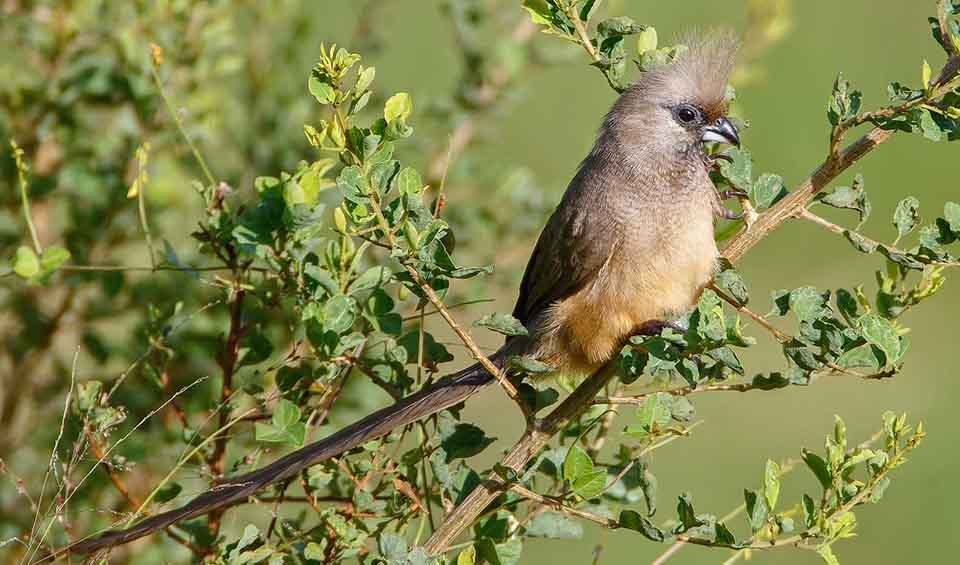Colius
Eating food while staying upright is still a thing, right? They beg to differ
These birds are named for their soft, greyish or brownish plumage and long, thin tails, which may remind one of a mouse’s fur and tail. The Speckled mousebird stands out as the largest living species within this family, with a body length of approximately 10 cm, not including its tail, which can be just as long or longer.
Mousebirds are recognizable by their crests—small tufts of hair-like feathers on their heads—along with their stubby bills, which are well-suited for their predominantly frugivorous diet. They also consume leaves, flowers, and occasionally insects, which they forage with agility thanks to their remarkable foot structure.
The locomotion of Colius species is indeed fascinating. Their pamprodactyl feet, which feature reversible outer toes, allow them to manipulate their grip in extraordinary ways. This adaptation enables them to feed in various positions, including hanging upside down, much like acrobats. This ability is not only an impressive feat of skill but also a practical feeding strategy that allows them to reach fruits and foliage from almost any angle.
Moreover, their strong claws aid them in clinging to branches and stems, even quite slender ones, giving them access to food sources that other birds may not be able to exploit. Their social nature complements this acrobatic behavior; mousebirds are often seen in groups, feeding and preening each other, which helps to maintain their social bonds.
Mousebirds are also known for their communal lifestyle, with groups often roosting closely together for warmth and safety. These complex social structures are believed to play a role in their survival, particularly in the colder regions of their distribution.
Species in this genus
Speckled mousebird
Their dull mousy-brown color justifies the name pretty well


